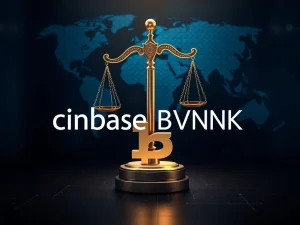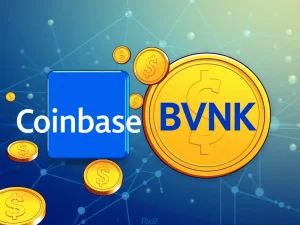Hyperliquid USDH: The Intense Battle for Stablecoin Issuance Heats Up

The cryptocurrency world watches a crucial battle unfold. Major crypto firms are fiercely competing to issue Hyperliquid’s new USDH stablecoin. This intense rivalry pits a coalition led by MoonPay and Agora against a proposal involving Stripe. The outcome will significantly shape the future of decentralized finance and stablecoin infrastructure.
Hyperliquid USDH: A New Stablecoin Emerges
Hyperliquid, a prominent DeFi platform, recently announced its plan for a new, compliant USD-pegged stablecoin. This initiative aims to create a “Hyperliquid-first, Hyperliquid-aligned” asset. The chosen issuer will gain substantial influence within the ecosystem. Consequently, numerous industry players quickly submitted proposals to secure this coveted role. The platform seeks a robust and trustworthy partner for its new digital currency.
Initially, the Native Markets team put forward a proposal. This plan suggested that Stripe’s stablecoin payment processor, Bridge, should issue Hyperliquid USDH. Their proposal included several attractive commitments:
- Contributing a meaningful share of reserve proceeds to Hyperliquid’s Assistance Fund treasury.
- Minting directly on the Hyperliquid ecosystem.
- Ensuring full regulatory compliance.
This early bid positioned Stripe as a strong contender. However, it also sparked immediate and significant opposition from other key players in the crypto space.
MoonPay and Agora Challenge Stripe’s Dominance
The proposal involving Stripe quickly drew criticism. Agora co-founder and CEO Nick Van Eck voiced strong objections. He argued against entrusting Hyperliquid’s canonical stablecoin to Stripe, citing potential conflicts of interest. “If Hyperliquid relinquishes its canonical stablecoin to Stripe, a vertically integrated issuer with clear conflicts, what are we all even doing?” Van Eck asked. He further urged caution regarding Stripe (Bridge) as an issuer.
Van Eck highlighted several concerns about Bridge’s suitability:
- Insufficient financial infrastructure experience.
- Limited product experience in the stablecoin sector.
- Stripe’s announced plans for its own Tempo blockchain, creating a potential conflict.
He questioned Stripe’s long-term commitment to Hyperliquid. “How long until Stripe and Bridge start pushing users and perps from other financial applications directly to Tempo instead of Hyperliquid?” he queried. These points underscored the competitive nature of the proposals and the strategic importance of this decision for Hyperliquid.
The opposition gained significant momentum when MoonPay officially joined Agora’s proposal. Keyth Grossman, MoonPay’s president and board member, announced their partnership. MoonPay committed to providing the regulated payment rails necessary for the initiative. Grossman echoed Van Eck’s criticisms of the Native Markets proposal. He asserted, “USDH deserves scale, credibility and alignment — not BS capture. That is this coalition, not Stripe.”
This alliance quickly garnered enthusiastic support. Rob Hadick, a general partner at Dragonfly.xyz, publicly praised the development. In an X post, he declared MoonPay’s addition made the coalition’s proposal the “unarguable best” for Hyperliquid USDH issuance. This united front presents a formidable challenge to Stripe’s initial bid.
Rival Crypto Firms Offer Competing Visions for USDH
Beyond the direct rivalry between the MoonPay-Agora coalition and the Stripe-linked proposal, other prominent crypto firms have also entered the fray. These additional contenders further intensify the competition for Hyperliquid’s stablecoin. Each firm brings a unique value proposition, often emphasizing community benefits and innovative reward structures.
Stablecoin issuer Paxos, for instance, submitted its own compelling proposal. Paxos promised to direct a percentage of the interest earned from USDH reserves. This revenue would then fund buybacks of Hyperliquid’s native token, HYPE. Subsequently, the acquired HYPE tokens would be redistributed to users, validators, and partner protocols. This model aims to directly benefit the Hyperliquid community and enhance token utility.
Furthermore, the Frax blockchain presented a highly community-centric proposal. Frax pledged to return all earnings generated from USDH – backed by its frxUSD – directly to the community. Their proposal boldly stated, “We’re proposing something no one else will match: give everything back to the community.” This approach seeks to maximize community engagement and decentralization, positioning Frax as a strong alternative for Hyperliquid.
The Broader Stablecoin Battleground and Global Adoption
The intense competition for Hyperliquid USDH issuance reflects a much broader trend. The stablecoin sector has become an active and rapidly evolving battleground. Regulators worldwide and traditional financial institutions are increasingly engaging with this asset class. This growing interest signals a maturation of the market and increased scrutiny.
Regulatory frameworks are quickly developing across different jurisdictions. For example, Hong Kong introduced a new stablecoin framework on August 1. Following this, major banks like HSBC and ICBC are reportedly preparing to apply for stablecoin licenses in the region. Similarly, the European Central Bank President Christine Lagarde recently urged EU lawmakers to address gaps in stablecoin regulation. This push aims to protect the euro’s stability against potential shifts to US-pegged stablecoins, as highlighted by ECB executive board member Piero Cipollone.
Moreover, stablecoin adoption is accelerating globally. Kazakhstan’s financial regulators now allow license and supervision fees to be paid using US dollar-pegged stablecoins. The US state of Wyoming plans to launch its own government-authorized Frontier Stable Token (FRNT). Additionally, 1Money, a company building a layer-1 blockchain for stablecoin payments, secured 34 US money transmitter licenses and a Bermuda license. These developments underscore the increasing integration of stablecoins into mainstream finance and government operations.
The race to issue Hyperliquid USDH therefore represents a microcosm of this larger global shift. The choice Hyperliquid makes will not only impact its own ecosystem but also potentially influence future stablecoin issuance models across the entire crypto industry. As crypto firms vie for this crucial role, their innovative proposals and strategic alliances will undoubtedly shape the future of digital finance.







